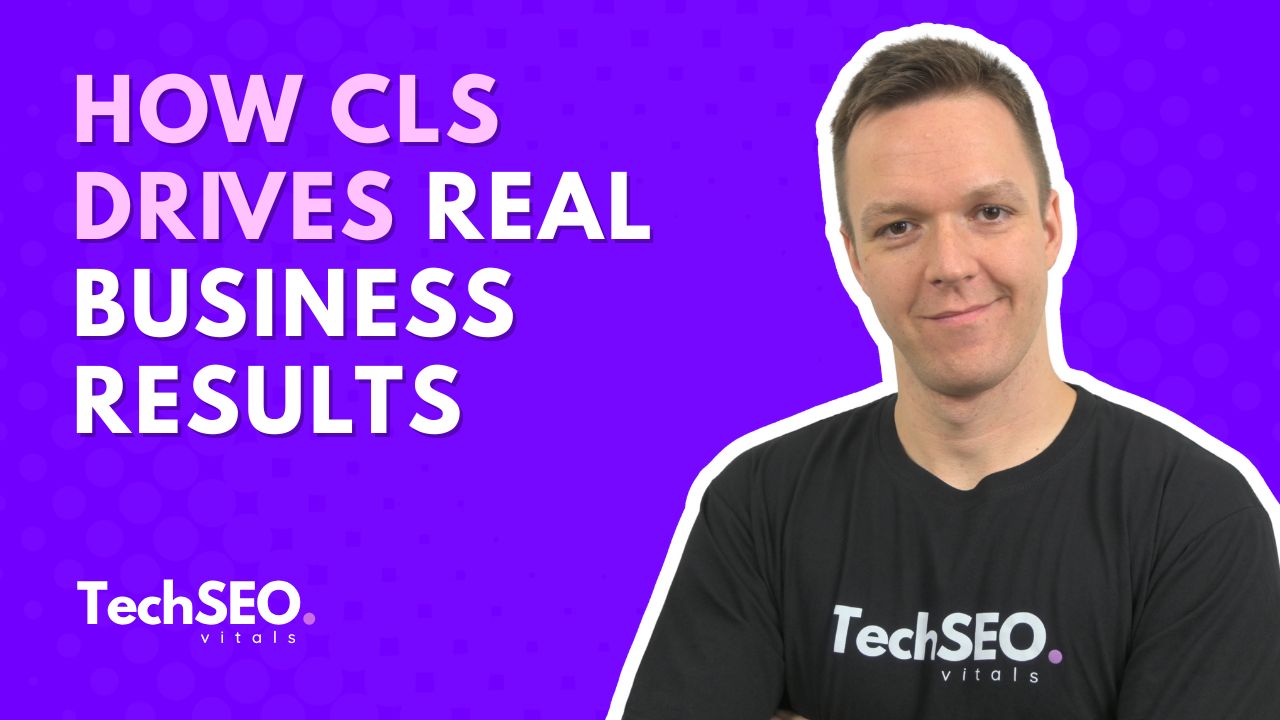A visually stable website isn't just about aesthetics. It also impacts business metrics. Take Carpe for example, a personal care e-commerce company that achieved a conversion rate increase of 5% and revenue jump of 15% with just 41% improvement in CLS.
Industry research supports that websites that meet Core Web Vitals thresholds are 24% less likely to see user abandonment during page load. What this means for businesses is that optimizing Core Web Vitals properly will ensure better user experience for customers, which in turn, translates into better customer conversions.
Cumulative Layout Shift (CLS), in particular, determines the visual stability of a website during user interactions. If the website content jumps around while loading, it can easily cause user frustration and can even lead to website abandonment. Thus, fixing CLS problems can deliver immediate ROI by keeping users engaged, building trust, and capturing revenue.
The Hidden Cost of Unstable Pages
What many business leaders see as a minor "technical glitch" is actually the cause of low conversion rates. When button positions shift unexpectedly, or images jump into place, customers experience frustration that can break trust.
I've often seen shoppers accidentally tap the wrong product or advertisement, become frustrated, and abandon their purchase entirely. Google research statistics show 88% of online customers won't return after a poor user experience. Every unexpected layout shift represents a potential customer going away to competitor websites.
Google's algorithms also take CLS as a factor into search rankings, so visual stability issues mean lower organic visibility.
Why Visual Stability Builds Customer Trust
CLS measures visual stability from a scale of 0 to 1 (can be higher in a few cases). High CLS scores mean images, buttons, and text are jumping around. It's that annoying moment when you're reading an article and suddenly the text jumps down because an image finally loads. This instability makes the website feel unprofessional and can undermine user confidence.
Lower CLS gives users a better sense of control. They click what they intend to, get expected actions done, and complete desired activity with ease. By ensuring visual stability, you guarantee reliability to users. It's a subtle yet powerful form of social proof and authority. Your website feels dependable, making users more likely to trust you with purchases or sign-ups.
Measurable Business Impact and ROI
Yahoo Japan's news site saw session duration increase by 13%, and pages per session jump by 15% after a 0.2 CLS improvement. You can expect bounce rate reductions of 5-15% when layout shifts disappear.
In ROI terms, suppose the website receives 500,000 monthly visits with an average order value of $100 and 2% baseline conversion rate. If better visual stability increases conversion to 2.2%, that translates to 1,000 additional orders, equaling $100,000 extra monthly revenue.
Even with $20,000 investment in development costs, the ROI can have approximately 400% in return.
Beyond immediate sales, sites meeting Core Web Vitals standards see ranking improvements, driving more organic traffic over time.
Real-World Success: Carpe's Transformation
Carpe is a clear example of CLS improvements translating into revenue. Their team noticed troubling trends: as site elements became heavier and pages loading slower, user engagement declined and abandoned cart rate increased.
Over six weeks, Carpe's developers focused on Largest Contentful Paint and Cumulative Layout Shift, making the website load faster and more predictably. They discovered misconfigured lazy-loading scripts causing product images to appear too late. They fixed this by preloading critical images and setting proper size attributes for layout stability.
The results were impressive. Carpe achieved a 41% improvement in CLS with dramatically faster load times. Conversion rates increased over 5%, and monthly revenue jumped up to 15%. What was previously a $1M monthly sales baseline grew to $1.15M without additional advertising spend.
Your Action Plan: From Assessment to Results
Ready to achieve these benefits?
Start by auditing your website's current CLS immediately, using free tools like Google PageSpeed Insights. Identify which pages exceed the recommended 0.1 CLS threshold.
Next, prioritize quick fixes. Share findings with your technical team and focus on the top 10 pages with poor CLS. Allocate a small budget for a CLS fix project. Even a two-week focused effort can produce tangible improvements.
Set concrete milestones: "Reduce average CLS to 0.1 on all key pages by next month." Assign clear ownership for monitoring these goals, perhaps your SEO lead or a product manager overseeing web performance.
Strategic Implementation: My Three-Phase Approach
Improving CLS might sound technical, but I've developed a phased approach that makes it manageable and high-impact. If you're a business oriented reader, just forward it to your development team.
Phase 1: Quick Wins
Start by addressing obvious culprits causing layout shifts.
- Define image sizes and advertising space upfront so nothing jumps when these elements load.
- Implement a simple policy: never insert banners or pop-ups above existing content without reserving space first.
These fixes are quick, yet impactful. A single engineer can often deploy them within hours or in a couple days. The resource cost is minimal, but rewards are instant. You'll likely see bounce rate improvements overnight.
Phase 2: Comprehensive Optimization
With easy fixes complete, address deeper structural issues.
- Audit page templates for third-party scripts or font loading causing shifts.
- Preload critical assets like web fonts and defer non-essential scripts so they don't disrupt the layout.
This phase is cross-functional and requires developers, UX designers, and content managers to align. CLS scores drop into the good range (below 0.1) can be expected with progressive user engagement improvements. The best is to keep the CLS score on zero.
Phase 3: Ongoing Monitoring
Implement Real User Monitoring for CLS in your analytics. Set up alerts and use tools like Google Search Console to catch any regressions. Integrate CLS checks into your release process so future updates don't introduce new layout shifts.
Technical Implementation Guide
For technical development team, here are the most critical CLS improvement tactics:
Image and Video Dimensions: Ensure every <img> and <video> tag includes explicit width and height attributes. This allows browsers to allocate the correct space before media loads.
Reserve Space for Dynamic Content: Elements like advertisements or signup forms that load later need placeholder containers with fixed dimensions from the start.
Font Loading Strategy: Use font-display: swap in CSS so browsers show fallback fonts without layout shifts if custom fonts aren't immediately loaded. Preload web fonts in the page <head> for faster availability.
Avoid Inserting Above Existing Content: Never inject new UI elements at the top of pages that are not responses to user actions.
Testing and Monitoring: Test on throttled network speeds and mobile devices where CLS issues often surface more dramatically. Target CLS below 0.1 for at least 75% of good user visit score.
Conclusion
Layout stability isn't just a technical metric; it's also one of the factors to business success. From Carpe's 15% revenue increase to Yahoo! Japan's improved engagement, the evidence is clear that stable pages create trustworthy experiences that increase conversions.
With proper CLS optimization, you can expect bounce rate reductions of up to 15%, conversion improvements of up to 10%, and substantial ROI often exceeding 400%.
Your customers deserve a smooth, predictable experience. The question isn't whether you can afford to fix CLS issues; it's whether you can afford to ignore it.




